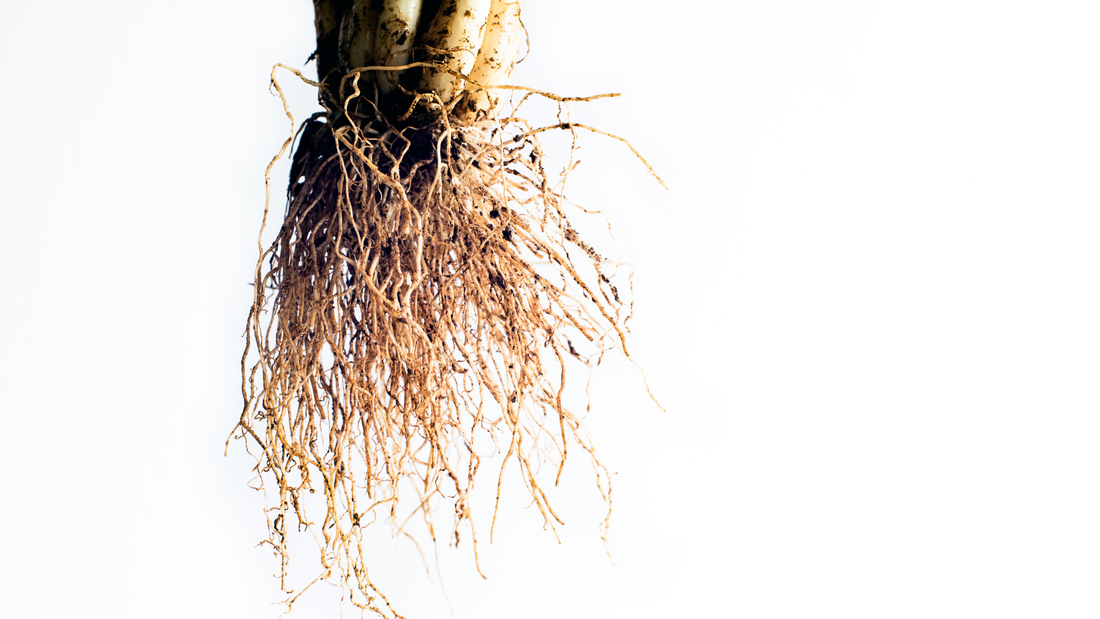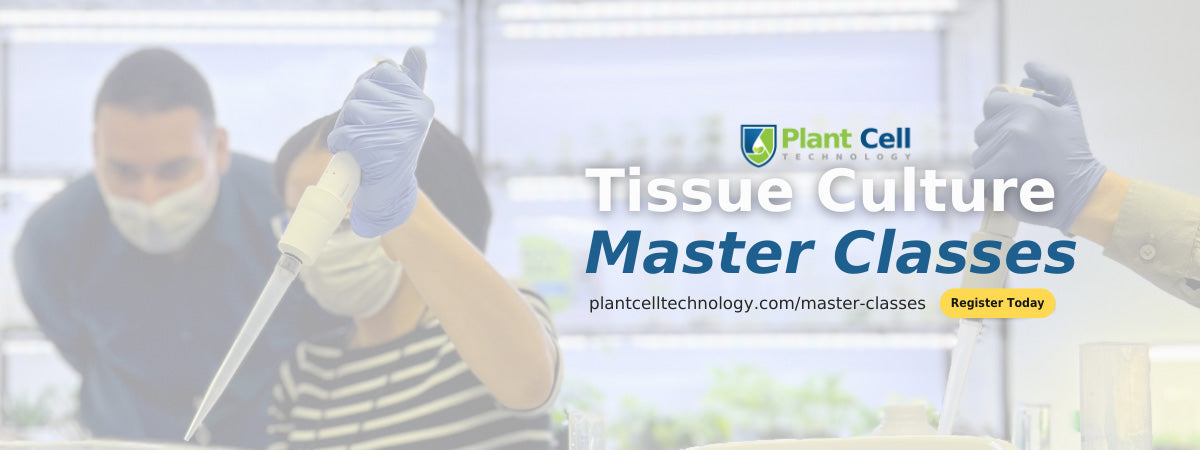
Hairy Root Culture: Definition, Process, and Applications
As a content and community manager, I leverage my expertise in plant biotechnology, passion for tissue culture, and writing skills to create compelling articles, simplifying intricate scientific concepts, and address your inquiries. As a dedicated science communicator, I strive to spark curiosity and foster a love for science in my audience.


Introduction
Will you be shocked if we tell you that the hairy root that was once thought to be a disease is now exploited in labs as a technology to produce complex molecules for different purposes?
In the range of 1930-1960, the hairy root was identified as a sign of pathogen invasion in horticulture plants. Later the organism responsible for the disease was recognized as Agrobacterium rhizogenes.
Hairy roots arise at the wound site of plants when they are infected with Agrobacterium rhizogenes. The bacteria transfer its fragment of DNA from its plasmid to plant cells. Though plants' defense system acts against the bacteria, they utilize the proteins of the system for their use dismounts the plant defense pathway.
Since 2000, the production of secondary metabolites or therapeutic proteins using recombinant DNA technology and transgenic plant production was a common thing. The technology offers many advantages over traditional ones, such as low upstream costs, and safety as it eliminated the risk of viral contamination, and complex glycosylation.
Two techniques, the hairy root culture, and cell suspension considered better approaches for the confined production of compounds. However, out of these, hairy root culture offered several advantages over the cell suspension technique, such as possible extracellular secretion of expressed proteins, genotypic and phenotypic stability, and target protein purification in a well-defined protein-deficient medium.
In this article, we will dive more into what the hairy root culture is, its applications, and why is it so popular in the tissue culture space in this article.
What Is Hairy Root Culture?
Hairy root culture is a type of tissue culture technique in which explants or cultures are infected with a Gram-negative soil-borne bacterium, Agrobacterium rhizogenes. It’s also known as transformed root culture.
The technique is widely used to either produce secondary metabolites or other recombinant proteins and study plant metabolic processes in labs. Further, it’s also used in the studies of phytoremediation and understanding the genetic, molecular, and biochemical aspects of genetic transformation.

Figure: Diagrammatic representation of hairy root induction in plants by the bacteria Agrobacterium rhizogenes under natural conditions.
Image Source: Gantait, S., Mukherjee, E. Hairy root culture technology: applications, constraints and prospect. Appl Microbiol Biotechnol 105, 35–53 (2021). https://doi.org/10.1007/s00253-020-11017-9
How To Induce Hairy Root Cultures In Vitro?
The general steps involved in the production of hairy root cultures are given below:
- The explants are wounded using a sterile scalpel or needle and inoculated in a bacterial solution.
- The explants are co-cultivated in a semisolid medium supplemented with suitable antibiotics such as carbenicillin disodium and cefotaxime sodium. This removes excess bacteria from the explant surface.
- In 7-30 days, you will observe root induction from the wounded place.
- Then, plants are subcultured in a plant growth regulator (PGR)-free medium and supplemented with ammonia, phosphate, nitrate, and other elicitors. It promotes secondary metabolism in cultures.

Figure: Diagrammatic representation of the steps of hairy root induction using Agrobacterium rhizogenes and regeneration of transformed plantlets.
Image Source: Gantait, S., Mukherjee, E. Hairy root culture technology: applications, constraints and prospect. Appl Microbiol Biotechnol 105, 35–53 (2021). https://doi.org/10.1007/s00253-020-11017-9
Some common bioreactors used for hairy root cultures include airlift, stirred tank, trickle bed, turbine blade, spin filter, and bubble column bioreactor.
Factors Affecting Hairy Root Culture
Many factors affect the induction of hairy root culture in vitro. It includes the types and growth stages of the explant, bacterial strains used in the process, culture conditions, suitable media for co-cultivation, carbon source, and the pH of the medium.
For example, a range of explants such as cotyledons, leaves, shoot tips, hypocotyl, protoplast, stem, and tubers can be used to induce hairy roots. However, young and juvenile explants are preferred in more applications because of higher success.
Applications of Hairy Root Cultures
Below are some widely known applications of hairy root cultures:
- Source of essential secondary metabolites: Hairy roots are a great source of secondary metabolites. Many known ones have been isolated using hairy root culture techniques, such as artemisinin from Artemisia, forskolin from Coleus, and indole alkaloids from Catharanthus.
- Metabolic engineering: It’s the process of producing transgenic plants with alien genes in their genome; especially in the region of enzymes that are responsible for the metabolic pathways. The method has been used to enhance alkaloid biosynthesis in Catharanthus roseus.
- Study of gene function: Transformation through A. rhizogenes has been used to study gene silencing, gene expression, and differential promoter expression levels under different conditions.
- Biotransformation: Hairy root cultures provide low cost, genetic stability, and multi-enzyme biosynthetic potential for the biotransformation process. Some examples of the previous studies include reduction reaction in the case of HR cultures of Daucus carota and biotransformation of ethanol and methanol into β-D-ribo-hex-3-ulopyranosides and β-D-glucopyranosides in HR cultures of Coleus forskohlii.
Interested in learning more about concepts and equipment related to tissue culture? Plant Cell Technology can help!

We curate weekly blogs and videos on tissue culture topics. They are all related to tissue culture equipment, practicals, tips, and tricks, how-tos, basic concepts, and the latest news. Our youtube videos teach you exactly how to carry out the tissue culture operation.
And, yes! If you’re stuck at any stage of tissue culture, you can book an appointment call with our tissue culture expert. They will help you to solve your query on a video call and give you the right direction to proceed with your experiment.
Occasionally, we also bring you comprehensive master classes led by tissue culture experts. So far, we have conducted tissue culture master classes on Cannabis and rare house plants and we ahve many other classes scheduled for you.
Interested in learning more about our master classes and joining your favorite one? Visit this link now!
P.S. Have questions about any tissue culture topic? Write at anjali@plantcelltechnology.com and I'll help you with your questions.
Blog Categories
View by Level
Popular Blogs

How Samantha Bridges the Gap Between the Nursery and the Lab
The Introduction Building a tissue culture program from the ground up requires more than just scientific knowledge—it requires the grit...
Read More
Understanding The Synthetic Seed Technology
Introduction Let’s be honest: traditional plant propagation can be a logistical nightmare. If you’re working with recalcitrant species—those stubborn plants...
Read MoreSubscribe to Our Newsletter








Join the conversation
Your email address will not be published. Required fields are marked